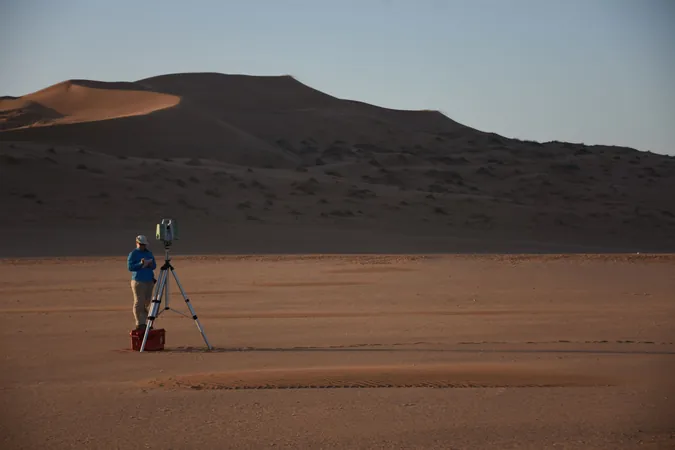
Unveiling the Secrets of Mini Dunes: How Tiny Sand Formations Emerge and Disappear
2025-06-11
Author: Siti
Discover the Fascinating World of Mini Dunes
Next time you find yourself wandering a beach or desert, be on the lookout for small patches of sand ripples just a few centimeters high. These miniature dunes can be sculpted by the wind in less than thirty minutes and can vanish just as swiftly. While massive dunes are well-understood, the mechanisms behind these smaller formations have remained an enigma.
New Research Sheds Light on Mini Dune Formation
In a groundbreaking study, researchers, including Camille Rambert, a doctoral student from École Supérieure de Physique et de Chimie Industrielles in Paris, utilized high-resolution laser scanning technology in the Namib Desert, Namibia. Their aim? To unravel the mysteries of how these tiny dunes come to be. Surprisingly, they discovered that the surface on which the sand sits—whether smooth or grainy—plays a pivotal role in the bouncing dynamics of sand grains.
The Dance of Sand Grains in the Wind
Though small sand formations are common in sandy environments, their transient nature has challenged scientists for years. Rambert and her team embarked on a mission in the Namib Desert to observe these bedforms up close. Using a laser scanner positioned inches from the ground, they captured high-resolution topographic maps of flat areas nestled among the larger dunes. This technology allowed them to measure subtle changes in the surface and analyze how these mini dunes evolve over time.
A Revolutionary Model for Understanding Dune Formation
By applying established physics principles for large dune formation, they developed a fresh model that emphasized the importance of the underlying surface materials. Unlike traditional dunes, which often form on loose sand, mini dunes arise on solid foundations such as gravel, impacting how wind influences sand grain movement. Rambert explained that sand transport increases on consolidated surfaces, leading to the distinctive growth patterns of these small dunes.
The Impact of Wind on Mini Dunes
As wind blows, grains that settle on the rough surface can trap more sand, amplifying the effect and leading to the creation of unique dune patterns. However, these formations can quickly disappear when stronger winds blow the grains away, preventing their growth.
Links to Other Worlds: Dunes Beyond Earth
Interestingly, scientists have identified dune formations on Mars and Saturn’s moon Titan, yet the instruments exploring these celestial bodies lack the advanced technology available on Earth. Davis, a planetary geologist from Imperial College London, noted that understanding Earth’s dune dynamics could offer key insights into how dunes operate on other planets. For instance, Martian dunes, often found in craters, present intriguing questions about their formation in such varied environments.
The Quest for Answers Continues
With ongoing debates surrounding the formation of dunes on Mars and beyond, researchers see these celestial landscapes as laboratories to challenge our understanding of physics under different planetary conditions. By studying sand transport and dune creation across different worlds, scientists hope to gain a clearer picture of these mesmerizing natural phenomena.




 Brasil (PT)
Brasil (PT)
 Canada (EN)
Canada (EN)
 Chile (ES)
Chile (ES)
 Česko (CS)
Česko (CS)
 대한민국 (KO)
대한민국 (KO)
 España (ES)
España (ES)
 France (FR)
France (FR)
 Hong Kong (EN)
Hong Kong (EN)
 Italia (IT)
Italia (IT)
 日本 (JA)
日本 (JA)
 Magyarország (HU)
Magyarország (HU)
 Norge (NO)
Norge (NO)
 Polska (PL)
Polska (PL)
 Schweiz (DE)
Schweiz (DE)
 Singapore (EN)
Singapore (EN)
 Sverige (SV)
Sverige (SV)
 Suomi (FI)
Suomi (FI)
 Türkiye (TR)
Türkiye (TR)
 الإمارات العربية المتحدة (AR)
الإمارات العربية المتحدة (AR)